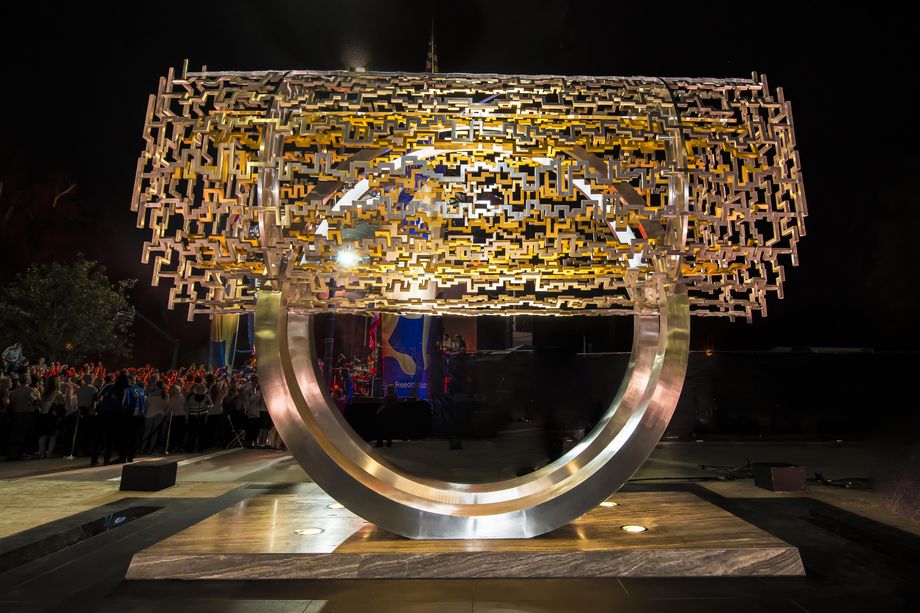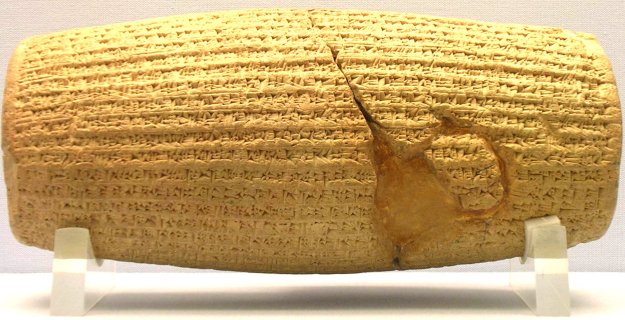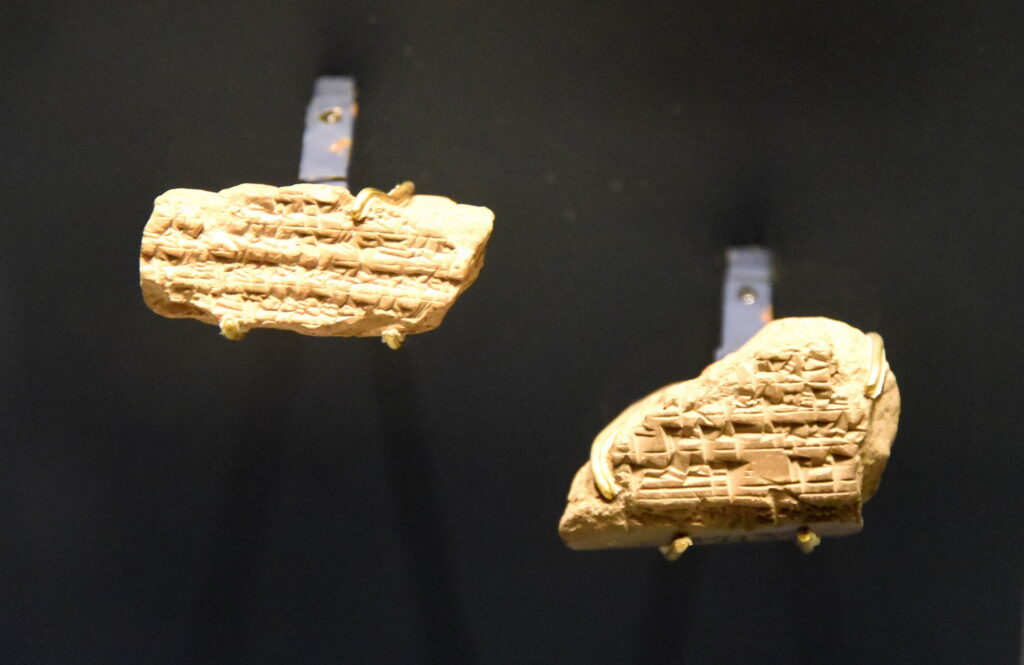One of the most famous artifacts in biblical archaeology is undoubtedly the Cyrus Cylinder. Sometimes hailed as the first declaration of human rights, a copy of it resides in the headquarters of the United Nations. More to the point of this blog, the Cyrus Cylinder confirms the biblical claim that Cyrus allowed the Jewish people who had been captured by the Babylonians to return to their homeland and rebuild their temple.

The Cyrus Cylinder was discovered in 1879 in the ruins of Babylon by Hormuzd Rassam. It is a baked clay cylinder, measuring 22.5cm by 10cm. and inscribed in Akkadian cuneiform script.


The inscription confirms Cyrus’ general policy of returning exiles to their “settlements” and allowing them to take their gods with them and rebuild their “sanctuaries.” The Jewish people had no idols, so the articles that had been taken from the Temple were returned. Cyrus’ specific proclamation for the Jews is recorded in Ezra 1:1-3:
In the first year of Cyrus king of Persia, that the word of the LORD by the mouth of Jeremiah might be fulfilled, the LORD stirred up the spirit of Cyrus king of Persia, so that he made a proclamation throughout all his kingdom and also put it in writing:
“Thus says Cyrus king of Persia: The LORD, the God of heaven, has given me all the kingdoms of the earth, and he has charged me to build him a house at Jerusalem, which is in Judah. Whoever is among you of all his people, may his God be with him, and let him go up to Jerusalem, which is in Judah, and rebuild the house of the LORD, the God of Israel—he is the God who is in Jerusalem.
Ezra further records that “Cyrus the king also brought out the vessels of the house of the LORD that Nebuchadnezzar had carried away from Jerusalem and placed in the house of his gods” (1:7).

It is claimed that Cyrus seemed to be more concerned about the views of the gods, and merely took steps to appease them, rather than acting for the goodness of the people. For instance, it is written on the cylinder:
“the gods of the land of Sumer and Akkad which Nabonidus – to the fury of the lord of the gods – had brought into Shuanna, at the command of Marduk, the great lord, I returned them unharmed to their cells, in the sanctuaries that make them happy.”
In exchange, these gods were supposed to return the favor to Cyrus:
“May all the gods that I returned to their sanctuaries, every day before Bel and Nabu, ask for a long life for me, and mention my good deeds, and say to Marduk, my lord, this: “Cyrus, the king who fears you, and Cambyses his son, may they be the provisioners of our shrines until distant (?) days, and the population of Babylon call blessings on my kingship. I have enabled all the lands to live in peace.”
While 19th century skeptics had scoffed at the biblical claim that a king would allow captured people to return to their homes and rebuild their temples, the Cyrus Cylinder confirms that this was indeed the policy of Cyrus the Great.
For further reading of the Cyrus Cylinder, we suggest you explore; “The Cyrus Cylinder: The Great Persian Edict from Babylon” by Irving Finkel.
Return from “Archeological Evidence For The Cyrus Cylinder” to “Archeological Evidence For The Bible“